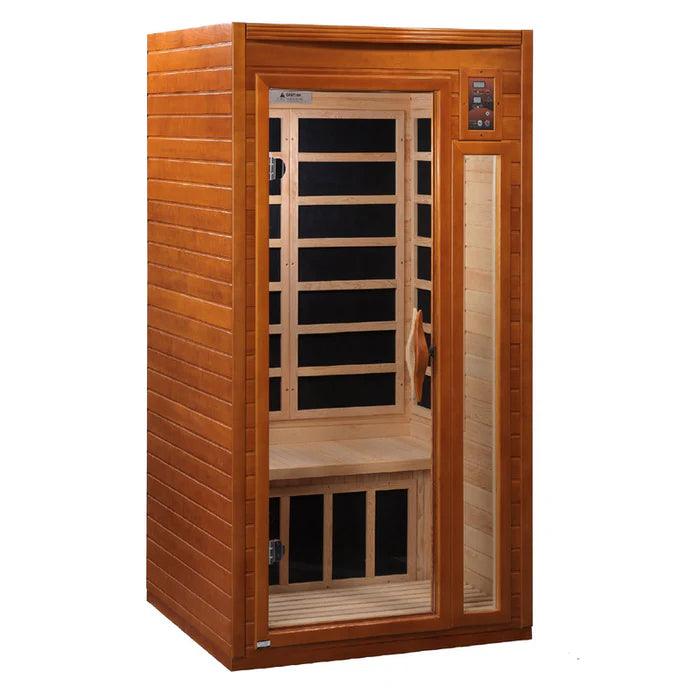In 2024, the world is witnessing a growing trend in the use of heat therapy as a non-invasive approach to enhance cardiovascular health. Traditionally employed for muscle relaxation and pain relief, heat therapy is now being explored for its promising role in heart health.
Emerging research and global interest in wellness have brought the therapeutic potential of heat, particularly through methods such as sauna bathing, Hot tub soaking, infrared therapy, and thermal wraps, to the forefront of cardiovascular medicine. This article delves into the scientific basis of heat therapy and its cardiovascular benefits, alongside the latest global trends in its adoption and research.
Understanding Heat Therapy and its Mechanisms
Heat therapy involves the application of heat to the body, which can raise core body temperature, dilate blood vessels, and improve circulation. Methods vary from traditional saunas and steam baths to modern infrared saunas and hot water immersion. These techniques share common physiological effects—chiefly vasodilation, improved endothelial function, and increased heart rate—creating an environment that mimics some of the benefits of physical exercise.
The cardiovascular system responds positively to controlled heat exposure by reducing arterial stiffness and improving overall circulation. Heat therapy's ability to increase blood flow to the heart and peripheries helps to nourish tissues, lower blood pressure, and enhance cardiovascular function, making it an intriguing complement to conventional treatments for heart disease.
Cardiovascular Benefits of Heat Therapy
1. Lowering Blood Pressure
Regular sauna use causes vasodilation, or the widening of blood vessels. The heat from the sauna induces a state where the body’s core temperature increases, causing the blood vessels to relax and expand. This process leads to a reduction in peripheral vascular resistance, allowing blood to flow more easily and lowering the pressure exerted on the artery walls.
A significant body of research has shown that regular heat therapy, particularly through sauna use, can lead to long-term reductions in blood pressure. Studies suggest that the heat-induced dilation of blood vessels helps reduce vascular resistance, allowing for improved blood flow and a corresponding decrease in blood pressure.
In Finland, for instance, frequent sauna bathing has been linked with a reduced risk of hypertension, heart attacks, and even sudden cardiac death.
2. Improved Endothelial Function
Endothelial dysfunction is a precursor to many cardiovascular diseases, including atherosclerosis. Heat therapy has been shown to improve endothelial function by promoting the release of nitric oxide, a molecule responsible for vasodilation. This process helps to keep blood vessels flexible and responsive, reducing the risk of plaque buildup and arterial blockages.
3. Reduced Risk of Cardiovascular Events
Long-term studies, particularly those conducted in Scandinavia, have found a direct correlation between regular sauna use and a reduced incidence of cardiovascular events such as heart attacks, strokes, and heart failure. In one large-scale Finnish study, participants who used saunas four to seven times a week had a 50% lower risk of cardiovascular disease compared to those who used it once a week.
4. Mimicking Exercise
Heat therapy elevates heart rate, increases cardiac output, and stimulates sweating—similar to moderate physical activity. For individuals unable to engage in regular exercise due to physical limitations or chronic conditions, heat therapy offers a passive means to achieve cardiovascular benefits. This mimicking of physical activity has led researchers to investigate heat therapy as a tool for cardiovascular rehabilitation and prevention.
5. Anti-inflammatory Effects
Saunas can reduce chronic inflammation, which is a significant contributor to cardiovascular diseases. The heat from saunas triggers a physiological response that lowers levels of inflammatory markers in the body. These markers include C-reactive protein (CRP) and interleukin-6 (IL-6), both of which are linked to systemic inflammation.
Saunas promote the release of heat shock proteins (HSPs), which help protect cells from stress and injury, reducing inflammation. Regular sauna sessions have been shown to decrease the overall levels of pro-inflammatory cytokines and enhance the anti-inflammatory response. This helps improve blood vessel health, reduces arterial stiffness, and supports cardiovascular function.
6. Improving Sleep Quality
Sleep is crucial for cardiovascular health. Poor sleep is linked to increased blood pressure, atherosclerosis, and a higher risk of heart disease. Long term research has found that, Heat therapy, especially when done in the evening, has been shown to improve sleep quality. The body’s natural cooling response after a sauna session or hot bath promotes relaxation and deeper sleep. Improved sleep quality helps regulate stress levels and allows the cardiovascular system to recover, lowering the risk of heart disease.
7. Enhancing Heart Rate Variability (HRV)
Heart rate variability (HRV) is a measure of the variation in time between heartbeats and is an important indicator of cardiovascular health and stress resilience. A higher HRV is associated with better heart health and the ability to adapt to stress, while lower HRV is linked to chronic stress and a higher risk of cardiovascular disease. Heat therapy has been shown to improve HRV by promoting parasympathetic activity, helping individuals manage stress more effectively and reduce the likelihood of stress-related heart issues.
8. Detoxification and Improved Circulation
Heat therapy stimulates sweating, which is a natural detoxification process. Sweating helps eliminate toxins and heavy metals from the body, many of which can contribute to cardiovascular issues. Additionally, the improved circulation from heat therapy enhances the delivery of oxygen and nutrients to tissues, while helping to remove metabolic waste products. This supports the cardiovascular system’s overall function and resilience in individuals with high-stress profiles.
2024 Global Trends in Heat Therapy for Cardiovascular Health
1. Technological Advancements
In 2024, advancements in heat therapy technologies have expanded access and options. Infrared saunas, which penetrate deeper into the skin without excessively heating the surrounding air, are gaining popularity for their comfort and efficacy. Portable heat therapy devices, such as thermal wraps and localized heating pads, allow for targeted heat application, making therapy more convenient and accessible for individuals managing specific cardiovascular risks.
2. Integration into Wellness and Healthcare Programs
Heat therapy is increasingly integrated into comprehensive wellness programs across the globe. In countries like Japan, Finland, and South Korea, where public baths and saunas have long cultural significance, there is a growing focus on using these practices as preventive healthcare measures. Medical spas, wellness centers, and even cardiovascular clinics now incorporate heat therapy to complement traditional treatments.
3. Research Expansion
In 2024, the body of research on heat therapy and cardiovascular health is rapidly expanding. Ongoing clinical trials are investigating the long-term effects of regular sauna use, infrared therapy, and other heat-based treatments on various cardiovascular parameters, including heart rate variability, arterial stiffness, and cholesterol levels. These studies aim to establish standardized protocols for the optimal duration and frequency of heat therapy to maximize cardiovascular benefits.
4. Global Recognition and Adoption
Countries in North America and Europe are following the lead of Scandinavian nations by embracing sauna bathing and heat therapy as adjuncts to traditional cardiovascular care. Wellness-focused resorts in the United States and Canada, for instance, offer infrared sauna sessions marketed explicitly for heart health. Meanwhile, public health campaigns in countries like Germany and Finland encourage sauna use as part of an active and healthy lifestyle.
5. Heat Therapy for Special Populations
There is growing interest in using heat therapy for populations at higher risk of cardiovascular disease, such as individuals with diabetes, obesity, or chronic kidney disease. Researchers are exploring how heat therapy can be tailored to these groups to provide cardiovascular benefits without posing risks, especially regarding thermal tolerance and dehydration.
Also, For individuals in high-stress jobs, heat therapy offers a simple, non-invasive way to combat the harmful cardiovascular effects of chronic stress. By lowering blood pressure, reducing inflammation, improving endothelial function, and promoting relaxation, regular heat therapy can significantly reduce the risk of cardiovascular diseases. This makes it a valuable tool in maintaining heart health for those exposed to constant stress, while also providing mental and emotional benefits that help mitigate the long-term risks associated with high-stress careers.
Safety Considerations
While heat therapy holds significant therapeutic potential, it is important to recognize that it may not be suitable for everyone. Individuals with severe cardiovascular conditions, such as unstable angina or heart failure, should consult their healthcare providers before engaging in heat-based therapies. Dehydration, overheating, and electrolyte imbalances are risks that must be managed with proper hydration and moderation during sessions.
Conclusion
The therapeutic potential of heat therapy on cardiovascular health is gaining global recognition in 2024. With increasing evidence from scientific research, heat therapy emerges as a valuable tool for improving cardiovascular outcomes. From lowering blood pressure and reducing inflammation to mimicking the benefits of exercise, heat therapy offers a non-invasive, accessible option for enhancing heart health. As technology advances and research progresses, the future holds promising possibilities for integrating heat therapy into mainstream cardiovascular care.











